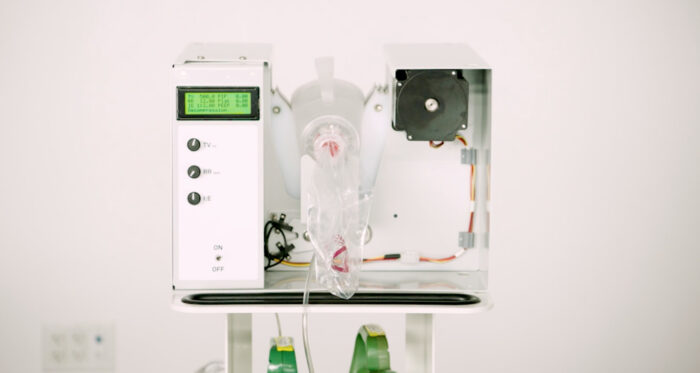We’re currently battling one of the largest global crises of the decade. The COVID-19 pandemic came from nowhere, and the healthcare sector never could have predicted the rise in demand for equipment and supplies needed to tackle and prevent the spread of the virus, including medical-grade face masks, hand sanitizer and ventilators.
The ventilator shortage has been a worldwide issue since around mid-February, when the virus had spread far and wide and scientists and medical professionals were beginning to more thoroughly understand its implications. But as time has passed, ventilator production has increased, while the need for the devices has thankfully decreased.
With that said, there’s no knowing if and when we may see a “second wave” of COVID-19, and doctors need to be ready. They also need to be able to treat the hundreds of patients who are still being admitted to hospital with the virus.
The Emergency Ventilator
The emergency ventilator has been developed by a team of physicians and engineers at the University of California San Diego. This new ventilator is sold at a much cheaper cost than a standard ventilator – $5,000 compared to $50,000, according to Science Daily.
The automated system has been designed to fit around a ventilator bag that is currently found in ambulances. The components that make up the device can be manufactured very quickly and easily, and it takes a reported 15 minutes to put the whole thing together. Because the components of the emergency ventilator are not produced by healthcare-related companies, there’s much less risk of the supplies being affected by shortages or running out entirely.
Original vs Emergency Ventilators
What makes the original ventilator so high in value is the airflow and oxygen sensors it uses, which are similar to those found at https://www.sensoronics.com/. These sensors detect the exact volume of air that passes into the patient’s lungs, helping to ensure that the right amount of oxygen is delivered based on a patient’s needs.
The emergency ventilator, on the other hand, does not use an airflow sensor. Instead, it uses a sensor that detects pressure, and uses its readings to administer the correct amount of oxygen based on this alone.
The Future of the Emergency Ventilator
At the moment, the emergency ventilator isn’t available for use in hospitals and other healthcare facilities. The team behind the invention are currently seeking approval for the ventilator to be put into use through the Food and Drug Administration.
Speaking to Science Daily, James Friend, a professor at the UC San Diego Jacobs School of Engineering, said: “The combination of off-the-shelf components and readily machined parts with mechanically driven pressure control makes our design both low cost and rapidly manufacturable.”
The idea is for the machine to be used by healthcare professionals who may not have much prior experience working with ventilators. According to the researchers, the device would also be of great use if supplies were to run sparse, or for use in developing countries and rural areas.
- Why Party Bus Are Becoming The Talk Of The Town? - January 7, 2021
- How to Provide More Flexibility for Your Business Operations - September 14, 2020
- How Do Cybersecurity Professionals Investigate Threats? - August 22, 2020
- Shopping For Clothes That Give You A Slimmer Look - July 29, 2020
- Emergency Ventilator May Save Lives of COVID Patients - July 22, 2020
- Enjoy these Top 5 Nintendo Switch Games (and more) with JustLoveE-Gifts - June 24, 2020
- Guide on How to Save Money on Flower Delivery - May 29, 2020
- Morning Routine That Will Improve Your Health - May 27, 2020
- Why Healthcare Innovation is Vital to the Industry - May 22, 2020
- Mapping out the Future: What Should Be Your Top 5 Priorities When Starting a Family? - May 12, 2020




